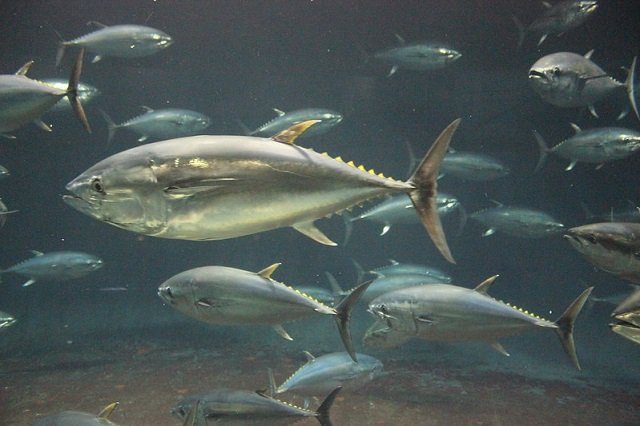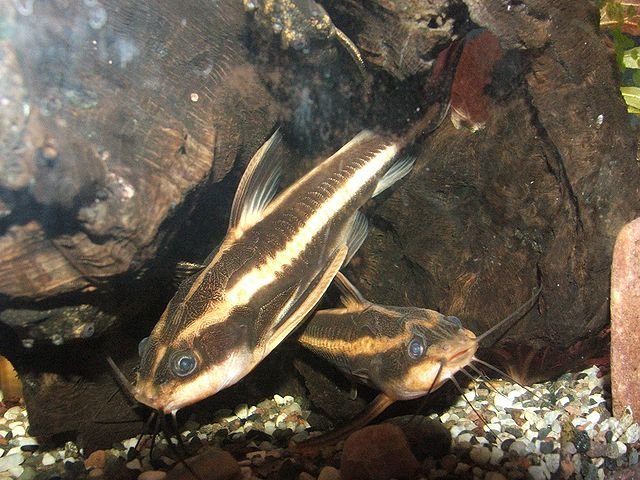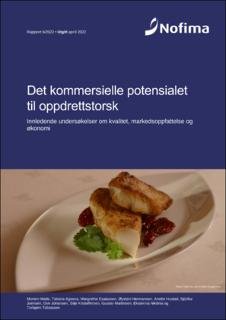Attention seafood lovers! Gabor Hetyey strongly recommends a new dish: fried catfish.
Hetyey is no restaurant chef in his native Hungary. Rather, he belongs to a Budapest-based organisation that helped breed a new variety of catfish after a decade of research.
Best breed
His non-profit entity coordinated an EU-funded project to show the promises of fish farming, also known as aquaculture. The new type of catfish developed as a result of the initiative can adapt quickly to different breeding environments, grows faster and is more resistant to diseases.
‘One of the main outputs of the project was the newly created German-Hungarian hybrid catfish, bred from two of the most excellent yet unrelated lines,’ said Hetyey, managing director of Kseris.
Fish farming will be crucial to ensuring enough food for a growing global population now at 8 billion people because oceans and seas are already at the limit of overfishing. Furthermore, fish form part of a healthy diet because they contain such nutrients as omega-3, vitamins and minerals.
‘We are removing fish at a much greater rate than they can reproduce,’ said Hetyey. ‘At the same time, demand for fish is steadily increasing.’
“
Catfish, blackened or fried, is one of the best-tasting fish.Gabor Hetyey, SilGen
The project, called SilGen, created a mass-production system for premium-quality freshwater catfish. The initiative ran for 24 months until last year, building on research begun in 2012 by five leading fish-breeding and research companies.
The researchers started by breeding the best possible domesticated version of the European catfish. They mapped out the genes of the fish and marked beneficial traits to improve the offspring until coming up with the new breed, which has taken the name of the project.
Stay Always Informed
Join our communities to instantly receive the most important news, reports, and analysis from the aquaculture industry.
Besides adapting better, growing faster and being more resilient, the SilGen catfish offers environmental gains because breeding it involves fewer chemicals and antibiotics, according to Hetyey.
‘SilGen catfish can be produced and distributed in a more sustainable way,’ he said. ‘The system is unique in giving a complete solution to the breeder – not just for production but also for marketing and distribution.’
Tasty and easy
Apart from making fish breeding more efficient, the project focused on consumers by making it easier for them to eat catfish at home. It devised a method to offer ready-to-cook catfish fillets, with plans to make this product available in Germany, Hungary and Slovenia.
‘The modern European consumer does not have time or energy to purchase unprocessed fish, preferring to buy ready-to-cook, boneless fillet instead,’ Hetyey said.
The researchers hope this convenience supermarket item can increase the consumption of catfish across Europe and meet rising demand for local, sustainably produced food.
While catfish is relatively unknown to consumers, its white meat and firm texture could make it an appealing alternative to the likes of cod, salmon and tuna. Hetyey says it needs to be prepared the right way to have a chance of winning over fish eaters.
‘Catfish, blackened or fried, is one of the best-tasting fish worldwide – but only when it’s seasoned and cooked properly,’ he said.
The SilGen developers are working with farmers and restaurants to make the fish more widely available. There are promising negotiations with fish producers interested in using the SilGen technology, according to Hetyey.
Gene expressions
While finding the best possible breed of fish for farming is still usually based on genetics, genes can only partially explain the physical differences in fish.
Epigenetics, which includes the study of how the environment can change the way genes work, could become a powerful ally in improving the breeding of fish for food.
Unlike genetic changes, most epigenetic ones are reversible and don’t alter a DNA sequence. However, they can activate or deactivate certain genes and, as a result, help animals survive in different environments.
“
I was thinking: this cannot be just genetics.Professor Jorge Fernandes, EPIFISH
‘They’re almost like on and off switches of genes,’ said Professor Jorge Fernandes, a molecular-biology specialist at Nord University in Norway.
Fernandes had been working on epigenetics for years when he started reading about fish domestication. He became fascinated by how quickly the appearance of creatures like goldfish can change – for example their colours, the number of tails they have or the extent to which their eyes “pop out”.
‘It just stayed on my mind, even at night,’ Fernandes said. ‘And, at some point, I was thinking: this cannot be just genetics.’
This marked the start of the EPIFISH project, which ran for six years until 2022. Funded by the European Research Council, the project studied the role of epigenetics in fish domestication and selection to provide more knowledge to breeders and producers.
Nile native
The initiative focused on Nile tilapia, which are native to northern Africa and are one of the most-sold farmed fish species in the world.
‘It is quite tolerant to new environmental conditions and can eat almost anything, which makes it a very successful species for aquaculture,’ Fernandes said.
Nile tilapia become much bigger on farms than in their native habitats. Fernandes wanted to understand the epigenetic changes that allowed the fish to adapt quickly and grow better in captivity compared to the wild.
Looking at epigenetic markers, the researchers discovered that the fat-metabolism genes of the farmed fish are more active than in the wild because they consume more fat through their feed. If they consume too much fat, this can in the worst case cause a condition called “fatty liver”.
This knowledge could help producers understand how best to grow tilapia in a farming environment and make output of them more sustainable in the long run.
Next order
The EPIFISH findings could eventually be applied to other fish species.
‘With a bit of extra research, it could also be used for the selective breeding of salmon, sea bass, carp and other important farmed species and be expanded to other traits than growth like resistance to disease,’ Fernandes said.
Meanwhile, back in landlocked Hungary, Hetyey expressed confidence in the future consumer appeal of the SilGen catfish – as long as it becomes a more common offering in supermarkets and restaurants.
‘We believe that the only obstacle to consuming SilGen catfish is that consumers have not tasted it yet,’ he said.
Research in this article was funded via the EU’s European Research Council (ERC). If you liked this article, please consider sharing it on social media.
Editor at the digital magazine AquaHoy. He holds a degree in Aquaculture Biology from the National University of Santa (UNS) and a Master’s degree in Science and Innovation Management from the Polytechnic University of Valencia, with postgraduate diplomas in Business Innovation and Innovation Management. He possesses extensive experience in the aquaculture and fisheries sector, having led the Fisheries Innovation Unit of the National Program for Innovation in Fisheries and Aquaculture (PNIPA). He has served as a senior consultant in technology watch, an innovation project formulator and advisor, and a lecturer at UNS. He is a member of the Peruvian College of Biologists and was recognized by the World Aquaculture Society (WAS) in 2016 for his contribution to aquaculture.




